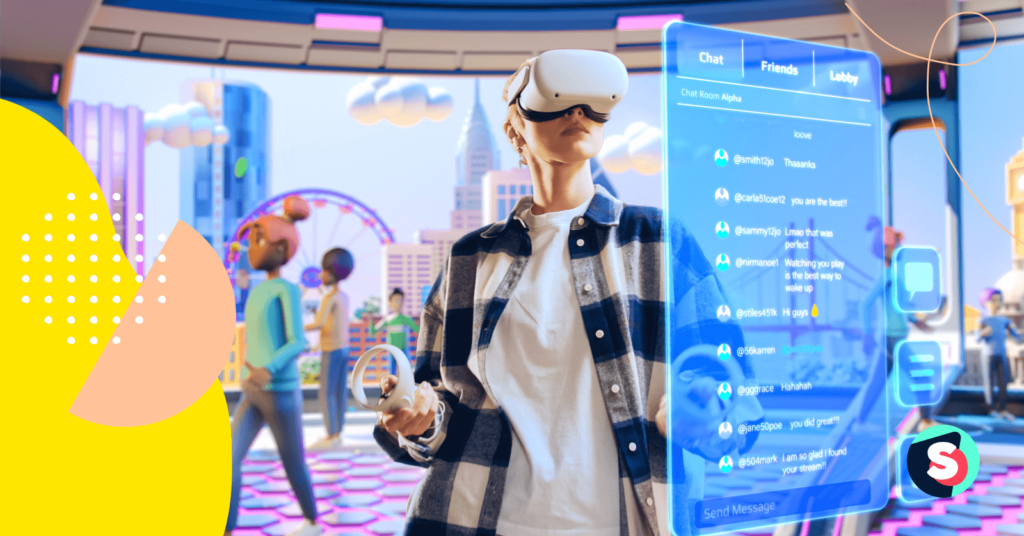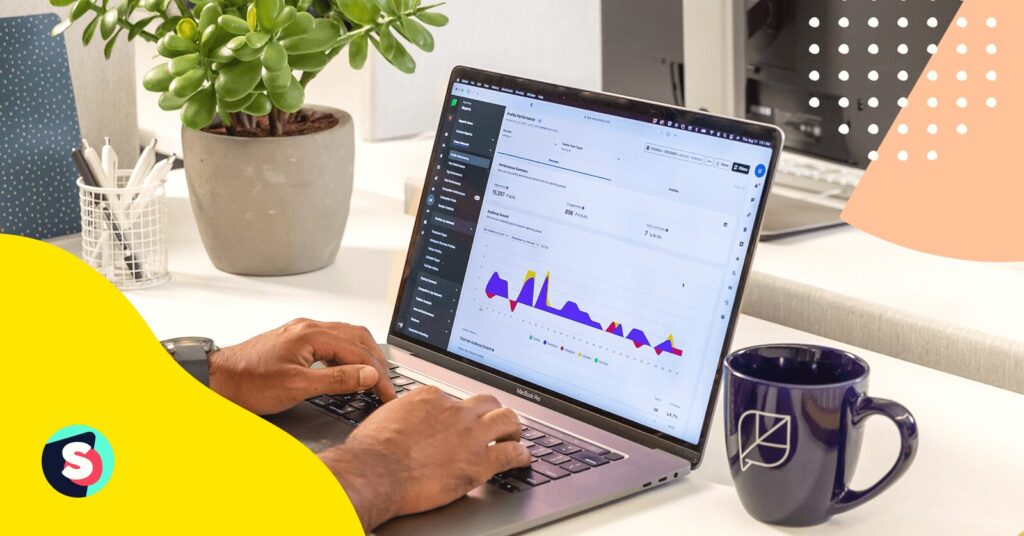Is your business ready for the ever-evolving virtual world? Although still in its infancy, the metaverse has captured both interest and excitement because of the limitless opportunities it offers. Brands are already leveraging its unique features to enhance their marketing strategy and business operations. So, now is the time to start your metaverse marketplace to capitalize on non-fungible tokens (NFTs).
Let us kickstart your NFT metaverse journey and explore the features, types, uses, and development of the metaverse NFT marketplace.
What is a metaverse marketplace, and why consider implementing it?
A virtual marketplace or metaverse marketplace is a digital platform wherein users can trade, buy, and sell digital assets such as NFTs. These NFTs are representative of ownership and/or authenticity and can include in-game assets, virtual lands, art, music, collectibles, digital images, videos, etc.
Every transaction relies on blockchain technology and NFTs can be used across the metaverse, enabling users to own and display virtual assets, attend virtual galleries, auctions, and presentations as avatars, engage in virtual commerce, create and experience immersive experiences, and more. Some metaverse marketplaces also allow users to buy and sell virtual real estate.
As a brand, you can buy your virtual land to set up a virtual shop. Your customers can gain access to the brand NFTs, tokens, or exclusive digital items. This can allow you to interact with metaverse users and offer unique virtual experiences.
Why should businesses consider implementing a metaverse marketplace
Many experts agree that solutions targeted at metaverse marketplace development across businesses will gain momentum. As the world moves towards remote and virtual experiences, brands will have to eventually enter the metaverse. In fact, brands such as Nike, Gucci, Adidas, and Louis Vuitton are already exploring virtual marketplaces.
It comes as no surprise that the global metaverse marketplace is expected to grow steadily at a CAGR of 47.2% between 2022 and 2027, as per the MarketsandMarkets report.
Here are some reasons why businesses will gain value from virtual marketplaces.
- Metaverse isn’t vulnerable to pandemics and other global crises and is not limited by location or operating hours. This will enable businesses to explore new opportunities to register profit.
- It will facilitate virtual commerce, enabling creators to monetize creations and reach a wider target audience.
- It will also serve as a hotspot for community building, making connections, sharing experiences, and participating in events and interactions in the metaverse.
- Immersive experiences and gamification will enable you to offer more value to your customers, thus, improving customer engagement and broad royalty.
- Moreover, in the near future, GenZ and millennials will become the main decision-makers who are the primary users interested in virtual marketplaces, opening new horizons.
This means the earlier you penetrate metaverse marketplaces, the more time you will have to create lasting relationships with your customers.
Benefits of a metaverse marketplace
Metaverse marketplace offers untapped opportunities to businesses. Here are some of the benefits that make it the next big thing.
Security
Since all transactions in the metaverse rely on blockchain, it ensures the security and safety of your digital assets. In fact, blockchain makes it almost impossible to meddle with your financial data. Additionally, the assets can never be misplaced, altered, replaced, or removed from the network.
Accessibility and inclusivity
Virtual marketplaces have broken down many barriers by allowing users to become a part of the digital economy, regardless of geography, time, and other limitations. You can create and join a global community of users, collectors, artists, etc. to showcase and collect your digital creations (assets).
Transparency
Metaverse marketplace allows users to view all transactions, helping build credibility and trust that may be lacking in the traditional market. Also, each NFT item stores a record of all transactions from previous and current owners. Decentralization enables all users to access this information, maintaining transparency.
Growth potential
Virtual markets offer immense potential and are, thus, attracting investment that will fuel its growth in the future.
Quick payments
Since the payments and transactions involving cryptocurrency do not require complete personal or credit card details, it is much easier, quicker, and private for the user to make instant payments.
Seamless experience
Metaverse NFT marketplaces offer a seamless trading experience. This is because the platform utilizes strategies and algorithms that ensure a great asset trading process.
Instant transfer of digital assets
Virtual markets assure buyers of ownership and authenticity through NFTs. They can convert digital items into NFTs and tokenize their assets to sell in the marketplace.
Features of a metaverse marketplace
Before you get into developing a metaverse marketplace, let us explore its unique features.
Decentralized platform
A decentralized platform means that it is not controlled or owned by a single person. In fact, it is a system operated by multiple computers and multiple users, transferring data to each other. Such platforms offer users control, privacy, security, and mobility of transactions without any third-party control.
Peer-to-peer transactions
In a decentralized marketplace, P2P transactions are safe and secure, enabling end-to-end encrypted asset transactions. Moreover, peer-to-peer technology and robust security systems offer protection from hackers, security breaches, or cyber-attacks. The data related to users and purchases are securely coded and transferred with smart contracts.
Interoperability
Interoperability unifies different systems and economies across the platforms (metaverses) so that users can engage in multiple marketplaces without any restrictions. A decentralized system allows you to interact, share data, and utilize features and services of other systems, providing a great unified experience. A siloed ecosystem doesn’t allow trading, cross-chain social connections, and other activities.
Simple tokenization
What makes metaverse NFT marketplaces attractive is that it allows the sale of virtual assets for real-life currencies. Users can easily tokenize their assets and list them on the marketplaces. Plus, it also establishes ownership for a better trading experience.
Interactive experiences
With creativity and the right tools, metaverse marketplaces can be made interactive and lively by investing in environment design. A realistic 3D environment should be able to provide users with immersive experiences to socialize and engage in trade activities.
NFT wallets
Integrating marketplaces with NFT wallets allows users to sell, buy, and store digital assets, streamlining secure transactions.
DAO integration
Metaverse marketplaces are implementing a decentralized autonomous organization (DOA) model. This will facilitate setting up an autonomous organization without any hierarchical structure. This means that DOA-enabled marketplaces are regulated by members and every decision requires proposals and voting.
Auction (bidding) and sales
The users can sell and buy NFTs through auctions wherein other users can propose their preferred prices for any asset or item.
Types of metaverse marketplaces
Various brands have already entered the world of metaverse marketplaces and you would be surprised to know how these different marketplaces work.
Metaverse gaming marketplace
GameFi or play-to-earn games blockchain games use cryptocurrencies, NFTs, and blockchain technology to create a virtual gaming environment Gamers can earn in-game rewards, characters, accessories, or in-game assets through blockchain technology and smart contracts. Moreover, since games utilize decentralized finance (DeFi), gamers can withdraw NFT assets into their wallets integrated into the gaming marketplaces.
This means metaverse gamers can search, trade, or purchase gaming assets on primary and secondary markets. Axie Infinity, The Sandbox, and Roblox are some of the successful metaverse games.
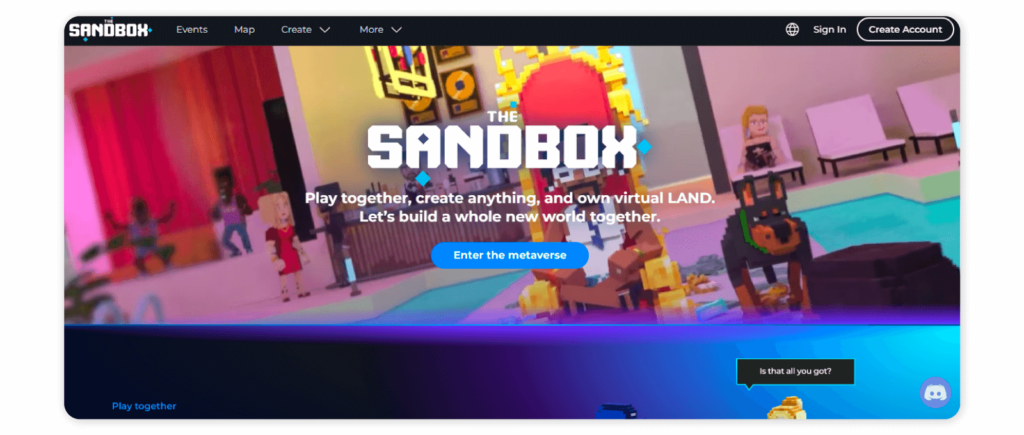
Metaverse NFT art marketplace
Various metaverse marketplaces have already been established that are trading in NFT arts. The NFT arts include digital assets such as GIFs, images, audio, videos, etc. For instance, Pak’s NFT artwork, The Merge was sold for $91.8m on Nifty Gateway which is a leading NFT marketplace.
The metaverse NFT art marketplaces also allow users to view and explore artwork in an interactive way. Users can use their avatars to attend art galleries and exhibitions, and also participate in auctions. Some of the popular metaverse NFT art marketplaces include OpenSea, Origin Sea, Sotheby’s SuperRare, and Rarible.
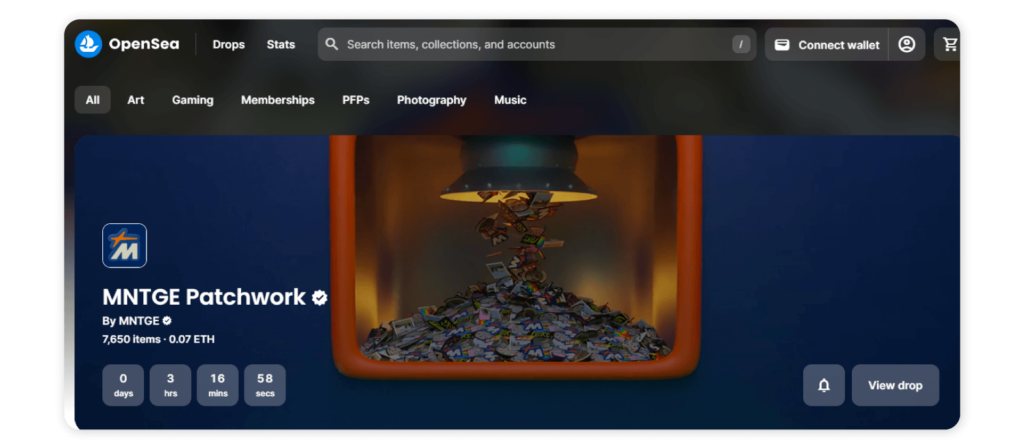
Metaverse real estate marketplace
In the metaverse real estate marketplace, you can buy or sell digital land or property. The users can bid for a piece of virtual land or property, pay the cost, and gain ownership. You can also build whatever you want on the land and control the access to your property. For instance, in Decentraland, metaverse members can buy, sell, rent, and carry out NFT auctions for real estate. What makes it more interesting is that businesses can showcase their architectural projects or prototypes and users in their avatars can explore buildings, properties, apartments, and much more.
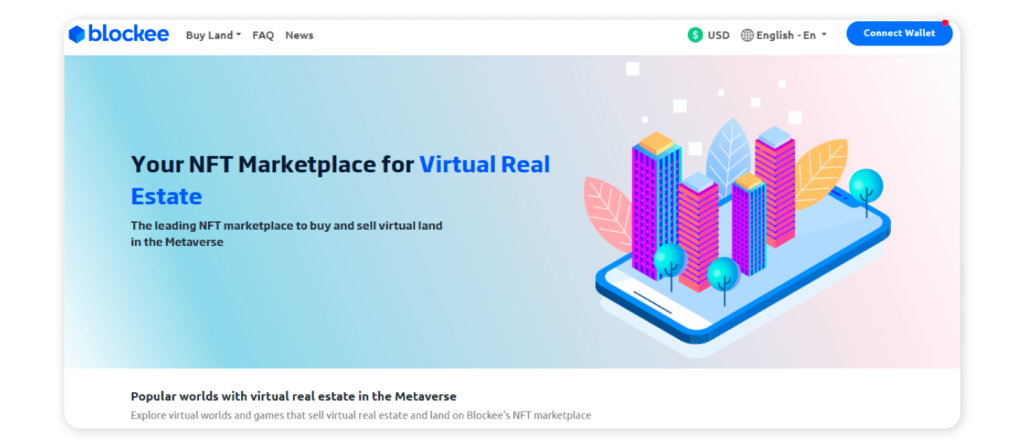
Metaverse e-commerce marketplace
Unique features of metaverse e-commerce marketplaces can offer much more than traditional e-commerce platforms. Thanks to the metaverse, buyers can visit virtual studios or showrooms, explore and engage with different products, compare them, as well as try them on their avatars. Interestingly, e-commerce marketplaces offer various immersive shopping experiences—trying gadgets, undertaking test drives, etc.
For instance, the cosmetic brand Charlotte Tilbury allows shoppers to invite friends on a shopping visit using Zoom-like screens. Harrod’s virtual Dior beauty store has flowers popping up from the floors, and Ferragamo’s House of Gifts takes customers inside an Italian villa.
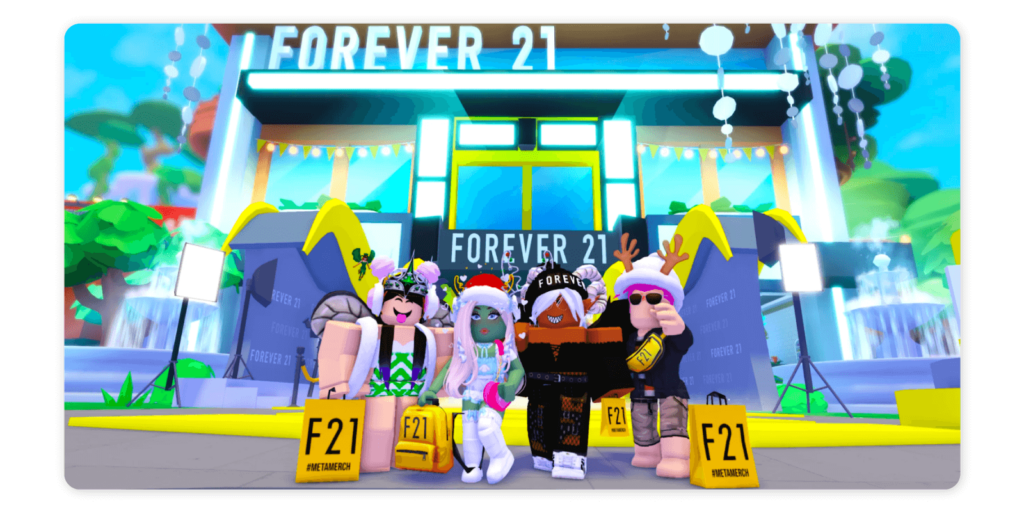
How to create a metaverse marketplace
Before we dive into how to develop a metaverse marketplace, it is important to note that it does require specialized skills and coding expertise. That is why businesses should consider options that may work for them.
In-house/internal team: Having your own development team can give you more control and authority over your metaverse project, from conception to execution. However, this approach may require considerable time, financial resources, and effort. Moreover, you would need to hire professionals as your employees who are skilled in the technology and expertise related to the metaverse.
Specialists and consultants: If you already have a dedicated IT team with developers, then you may not need to hire an entirely new team. You can, thus, consider enhancing the skills of your existing team by hiring an expert on a consulting basis. You can engage with specialists who are well-versed in metaverse and/or blockchain technology to support your internal team.
Outsourcing: If there is a constraint of resources, manpower, technology, and time, you may want to consider outsourcing the entire metaverse marketplace development project to a third party. Gof or a firm or agency that has expertise and a proven track record in extended reality (XR) solutions, blockchain, metaverse development, etc. Outsourcing can also help you focus more on the business side of things.
Steps to creating a Metaverse marketplace
Since the project does involve technical and creative aspects, it is recommended you have a clear vision of what you want. Do a thorough market and competitive analysis to see what’s working and what’s not in the metaverse for brands similar to yours.
Here’s how to go about creating your own metaverse marketplace.
Step 1: Choose a blockchain platform
The first step is identifying a suitable blockchain platform for your virtual marketplace. Consider factors such as functionalities, security, scalability, transaction speed and mobility, and developer community support when making a decision. Some popular choices include Ethereum, Hyperledger Fabric, R3 Corda, Stellar, Tezos, etc.
Step 2: Determine the key features of your metaverse
Take into account the features you want in your marketplace such as tokenization, auction/sales functionality, NFT wallet integration, interoperability, etc. Prioritize these features based on your objectives.
Step 3: Have a secure database in place
The next step is developing a secure and unyielding database for storing user and admin profiles. Make sure your sensitive data is safe and secure. You can also utilize IPFS (interplanetary file system) to store NFTs and the associated metadata for decentralized and distributed access.
Step 4: Create smart contracts
It is equally critical to build smart contracts that will govern and automate operations in the metaverse marketplace. Focus on transparency, irreversible transactions, and traceability. You can use smart contract programming languages such as Solidity (Ethereum virtual machine (EVM)), Plutus (Cardano), Vyper (EVM), etc.
Step 5: Design UI/UX
Engage with UI/UX designers to develop a user-friendly, visually appealing, and intuitive interface for your metaverse NFT marketplace. Here, you need to consider factors such as responsiveness, simplicity, seamless user experience, etc. You can also add 3D elements and other interactive features to enhance engagement and immersive experiences.
Step 6: Implement integrations
The next step is adding the required integrations to enhance the functionalities of your marketplace. Integrations may involve NFT wallets for easy transactions, payment gateways for fiat currency support, or dApps for enhanced features.
Step 7: Carry out testing and deployment
Before you make it live, you need to test your marketplace and identify any bugs or glitches. Consider conducting security audits to ensure your project is guarded against any potential vulnerabilities or breaches. Once you are satisfied with testing and the marketplace seems stable, you can then deploy the platform for users for access and engagement.
Step 8: Add community-building features
To encourage engagement and interaction within your virtual marketplace, you would need to add community-building features. These features can include chat platforms, forums,
capabilities for user-generated content, tools for creators, and collectors, etc.
Step 9: Improvement and updates
When it comes to metaverse marketplace development, iterative approaches work the best. Collect feedback from your users and implement changes based on the suggestions to enhance the overall experience of your platform. You need to keep optimizing and updating your marketplace to stay ahead of the competition.
Step 10: Develop a marketing strategy for user acquisition
You would need a robust and comprehensive marketing strategy to acquire and engage users in your metaverse marketplace. Consider using social media, content marketing, partnerships, influencer marketing, and community building to attract more eyeballs. Track your analytics and user data to improve your strategy and drive acquisition.
How much does it cost to develop a metaverse marketplace?
The development cost of a metaverse platform can range anywhere between USD 25,000 and USD 400,000 and development time can range from six months to a year or more.
Here’s a rough breakdown of the cost to give you an idea.
- Development team: A mid-sized team for a metaverse project can cost you between USD 50,000 and USD 200,000. In many cases, hourly rates can go up to USD 200.
- Technology stack: The cost of integrating blockchain technology can be between USD 10,000 and USD 50,000. Additionally, smart contract development may incur an extra expense of USD 5,000 to USD 30,000. If third-party tools or services are required, licensing fees can range from USD 5,000 to USD 20,000.
- Design/ user experience: It is essential to invest in a high-quality UI/UX design and the costs for design, wireframing, and prototyping can vary and may fall within the range of USD 10,000 to USD 30,000.
- Testing: Security audits, quality assurance, and testing tools may cost anywhere between USD 5,000 and USD 15,000
- Deployment: For the deployment of the platform, hosting, cloud services, domain registration, and SSL certificates are necessary. The costs for these components may range from USD 5,000 to USD 15,000.
- Maintenance and upgrades: The estimated ongoing maintenance costs per year can be roughly 20% to 30% of the initial development expenses.
Final Words
Currently, the metaverse is still in its early stages but holds immense growth potential across industries. Businesses can use the metaverse to create exceptional customer experiences and add value to their business. To capitalize on its indefinite potential, it is crucial to embrace and delve deeper into metaverse technology.

